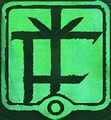User:The Turtle Academy/Canthan Language Research
Canthan is a very interesting and beautiful language. I wish there were more logograms and symbols for the player base to use...
Well, there are ! Old Canthan is a big source of inspiration for New Canthan, and symbols with the same meaning in both languages are written the same (only the style changed). There are also lots of still untranslated symbols that aren't part of the non-translatable alphabet.
If you're interested in helping with this research, contact me ^^
Here is what we know so far :[edit]
Non-translatable Canthan[1]: an alphabet[edit]
Non-translatable Canthan is based on hangul, the Korean alphabet, which uses a system of vowel letters and consonant letters to create syllabic blocks. This system was chosen as a relatively easy way to create many new symbols that looked distinct from those that are translatable and yet still a part of their family.
There are 5 vowel letters and 10 consonant letters:
These must be combined in one of two ways in order to create words:
1. Consonant + vowel
2. Consonant + vowel + consonant
While not as complex as hangul, which has additional combinations, non-translatable Canthan nevertheless produced enough new letters to fill Guild Wars 2: End of Dragons with a beautiful written language that felt grounded and representative of a forward-facing Cantha.
Some iterations in the world
...you can find loads of paperwork in the East Precinct
...Precinct Captain Min's notes
...on a Jade Bot Terminal
Translatable Canthan[2]: a symbol for every useful word[edit]
While the non-translatable Canthan does wonders for filling in books, the logographic words maintain some of the shape language created in Guild Wars: Factions®, as well as focus on words that get a lot of use on props in EoD. Some symbols were created for various NPCs that appear, as well as things you would expect to see on neighborhood signs such as "open" or "welcome."
The symbol for "open" specifically uses inspiration from "air," "light," "up," "night," and "day." If you look closely at those earlier words that are tied to concepts of open space and times of day, you begin to see that the smaller accent mark can be used to emphasize direction or sun placement. Thus, the "open" symbol means approximately "outside air." And when you are opening a building what are you doing but letting in the outside world?
"Welcome" continues some of those same concepts. With this symbol the devs wanted to say not only is the location open, but that the opening is done with affection. To achieve this concept, they took the symbol for "open" and combined it with a recurring piece found in symbols such as "love," "brother," and "sister" to indicate the additional concept of treating another as family.
"Achievement"[3]
"Animal"[4], same as Old Canthan
"City"[5], same as Old Canthan
"Daughter"[6], same as Old Canthan
"Dragon"[7]
"Empress"[8]
"Fish"[9]
"Life"[10], same as Old Canthan
"Love"[1]
"Naga"[11]
"Open"[1]
"Siege Turtle"[12]
"Son"[6], same as Old Canthan
"Victory"[13]
"Warning"[14]
"Welcome"[1]
- Profession logograms
"Elementalist",[15] same as Old Canthan
"Engineer"[15]
"Guardian"[15]
"Mesmer",[15] same as Old Canthan
"Necromancer",[15] same as Old Canthan
"Ranger",[15] same as Old Canthan
"Revenant"[15]
"Thief"[15]
"Warrior,"[15] same as Old Canthan
What Old Canthan tought us [16][edit]
Even back in the first game, there were few people who spoke the Old Canthan language, however, a number of words and phrases had been integrated into the Canthan dialect. Some words can still be seen in EoD : Kaineng (emperor) and Tahkayun (assassin) for example. Studying Old Canthan spoken language could be useful to find the pronunciation of old words or as inspiration for new ones. As said further above, we can also use Old Canthan symbols as inspiration for New Canthan, since the writing doesn't seem to have changed much. Here are all the symbols we have so far :
Open World research and speculations[edit]
Screenshots[edit]
...in front of the Royal Court (the second symbol means "empress" in New Canthan)
...on Jade Tech Protocols
...on Jade Tech Protocols
"achievement" ...on Jade Tech Protocols
"life" ...on Jade Tech Protocols
...on Jade Tech Protocols
...on a shop in New Kaineng City
...on a noodle shop in New Kaineng City
...on a lantern shop in New Kaineng City (the first symbol means "lantern" in Old Canthan)
...the same symbols on top of a Street Noodles Chair
...the same symbols on a Street Noodles Chair
...a warning sign seen during the Kaineng Blackout meta-event
...on the cover of the book from the /readbook emote
zoom on the title of the /readbook emote book
...in EoD's Launch Trailer[17]
Speculations on translation[edit]
There are still lots of unknown symbols to re-draw, but here are the ones I took the time to copy so far. Based on context, look and if they were seen in more than one place, we tried guessing their meaning :
resembles the Jade Brotherhood's emblem - probably means jade
Inventing new words[edit]
The process of creating a new word can use different techniques :
Modernise[edit]
We knew how "man" and "woman" looked in Old Canthan. They're still used to create "empress" or the 9 classes symbols. We can bring them up to date with a more New Canthan style, as well as many other Old Canthan words :
Detach[edit]
We know symbols can be made by putting other known symbols together. In Old Canthan, we had "man" and "sword", and put together they formed "warrior". Same with "death" and "necromancer", "elements" and "elementalist"... Well, let's tear up some other words !
Transform[edit]
We can also change the meaning of a word when we know the opposite of its 'base'. For instance, "Empress" is based on "Woman". If we change the "Woman" part in "Empress" to "Man", we get "Emperor" :
Combine[edit]
Of course, once we know enough words we can play little alchemy with 2 or more symbols, merging them together to give them a new meaning :
"Abaddon, fallen god of knowledge and water" from "god" + "water"
"Balthazar, god of war, fire, and challenge" from "god" + "arms"
"Dwayna, goddess of healing, air, and life" from "god" + "life"
"Grenth, god of darkness, ice, and death" from "god" + "death"
"Kormir, goddess of order, spirit, and truth" from "god" + "spirit"
"Lyssa, twin goddess of beauty, water, and illusion", from "god" + "siblings"
"Melandru, goddess of nature, earth, and growth", from "god" + "tree"
"Welcome" is the combination of "love", "brother" and "sister", which makes it a good substitute to "family" for the creation of "home"
Draw[edit]
Finally, we can get back to what the devs had to do : create symbols from (almost) naught. We can use representations of ideas and concepts, the appearance of what we seek to represent...
Old Canthan oral language[edit]
The old Canthan tongue has been forgotten, but a few words remain : Kaineng, Tahkayun... I wanted to understand it better in hope to find inspiration. For example, "moon" (musu) seems to be based on the word "star" (su). It would seem logical to try and integrate the "star" symbol when inventing "moon".
| Observed words, phrases and sentences in Guild Wars[18] | |
|---|---|
| Chang | Lord |
| Jaje Niya | Precious Treasure |
| Kaineng | Emperor |
| Mo Zing | Describes people who have no master, or guild, that they follow (like rōnin in japanese culture) |
| Naitahlen | Pirate(s) |
| Pahbahzhen | A form of greeting |
| Ran musu | Blue moon |
| Tahkayun | Assassin |
| Weh no Su | Closer to the stars/Near the Stars |
| Zhu Hanuku | Old Long Arms |
| Hai Jii | The Phoenix, the representation of fiery eternity in the Underworld |
| Kaijun Don (or Kai Jun Don) | The Kirin, the embodiment of corruption |
| Kuonghsang (or Quon Sang) | The Turtle Dragon, the eternal paradox |
| Tahmu (or Tah Mu) | The Dragon, a reminder of atrocity, pain, and anguish |
| Kei na Kai | Unknown. Seen in Tahnnakai Temple mission, in A Master’s Burden quest and in Power Surge. Probably an old saying referring to Kaijun Don. Always used when terrible things happen. |
| Cong a tae? Ah lo rai fat.... Cam bau len ah kao? | Unknown. Seen in Tahnnakai Temple mission (Kaolai may be trying to remember who he is - he'll say later in the story when asked for advice : "I know not who I am, but somehow I know this: you must now [...]") |
| Ah raion ii! ; Dun ah! ; U man ah kao zaa yundin | Unknown. Seen in Tahnnakai Temple mission (Bound Kaolai's cries of regret and agony when fighting him) |
| Ah ja singka ra beh. Ah ka Vizu jai! Behnu ra fan kuu! ; Ah him ra beh yan. | Unknown. Seen in Tahnnakai Temple mission (Kaolai's words after being freed, while the player is going forward to save Vizu) |
| Ah sang beh | Unknown. Seen in Tahnnakai Temple mission (Bound Vizu: "Get away from me, demons! Ah sang beh!") |
| Huu na mang | Unknown. Seen in Tahnnakai Temple mission (Bound Vizu: "I serve Cantha, not that huu na mang! He is a traitor to his Emperor!") |
| Pongmang | Unknown. Seen during Finding The Oracle (Nika: "Get your hands off me, pongmang! You are unfit to touch me!") |
| Kai sang | Unknown. Used as an epithet during Finding The Oracle (Nika: "I said...get...your...kai sang...hands...off...me!") |
| Ku kao Xa'ah, ikah tanra bah nae | Unknown. Seen in Raisu Palace mission (Shiro Tagachi says that when the player reaches him at the end of the mission) |
| Rai, cambah nuang | Unknown. After completing the Raisu Palace mission (Vizu:"Togo is dead? Rai, cambah nuang! What a loss! I pray the envoys guide him quickly and safely home to the Mists.") |
| Speculations on translation | |
|---|---|
| Su | star(s) - seen in "Weh no Su" and "Ran Musu" : "closer to the _stars_" and "blue moon" |
| Ran | blue |
| Musu | moon |
| Mu | big? (the moon is a big star from a Canthan commoner's perspective) |
| Weh | close, near |
| no | to |
| Jaje or Niya | treasure - this info could be useful to create the word "gold" and others linked to it |
| Jaje or Niya | precious - this info could be useful to create the word "gold" and others linked to it |
| Kei na Kai | Kai's corruption - Kaijun Don is the embodiment of corruption, and her story matches the contexts of the sentence's uses |
| na | if the above deduction is correct, "na" means "of" |
What now ?[edit]
I'm currently working on a symbol for the last mount (warclaw).
In addition to that, I have a list of things I've thought of :
Things that can be done in a near future[edit]
Additive made-up words to draw :
- Soo-Won=dragon mother?
Appearance made-up words to draw :
- cat, dog or just pet = based off animal
Things that could be very useful[edit]
- rock
- colors : red, blue (ran), yellow, white, black (then other colors can be made by addition : green=blue+yellow, purple=red+blue, orange=red+yellow, grey = black+white)
- jade, amber = green rock and yellow rock
- opposite & negation
- far, apart / close, together (close+star=Weh no Su)
- big, vast / small, tiny
- early, start / late, end / mid
- seasons (spring, summer, fall, winter) and months (early+spring=march...)
- gold = achievement, tool, city...? (jaje niya=precious treasure)
- merchant/banker = gold+man
- energy ?
- Luxon = merchant, sea, turtle/crab/serpent, jade
- Kurzick = forest, art, philosophy, amber
References[edit]
- ^ a b c d https://wiki.guildwars2.com/wiki/Designing_the_Canthan_Written_Language
- ^ https://wiki.guildwars2.com/wiki/Languages_of_Tyria
- ^ Official tweet, Twitter.com
- ^ Official tweet, Twitter.com
- ^ Official tweet, Twitter.com
- ^ a b Official tweet, Twitter.com
- ^ Official tweet, Twitter.com
- ^ Official tweet, Twitter.com
- ^ Official tweet, Twitter.com
- ^ Official tweet, Twitter.com
- ^ Official tweet, Twitter.com
- ^ Official tweet, Twitter.com
- ^ Official tweet, Twitter.com
- ^ Official tweet, Twitter.com
- ^ a b c d e f g h i Official tweet, Twitter.com
- ^ http://web.archive.org/web/20100626084205/http://guildwars.incgamers.com/forums/showthread.php?t=439772
- ^ EoD Launch Trailer]
- ^ https://wiki.guildwars.com/wiki/Language#Old_Canthan
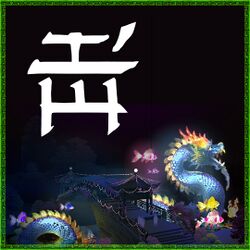






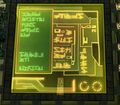
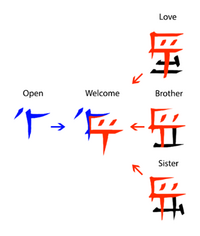
!["Achievement"[3]](/images/thumb/5/5e/Canthan_logogram_achievement.jpg/50px-Canthan_logogram_achievement.jpg)
!["Animal"[4], same as Old Canthan](/images/thumb/b/b9/Canthan_logogram_animal.jpg/50px-Canthan_logogram_animal.jpg)
!["City"[5], same as Old Canthan](/images/thumb/b/b9/Canthan_logogram_city.jpg/50px-Canthan_logogram_city.jpg)
!["Daughter"[6], same as Old Canthan](/images/thumb/c/c8/Canthan_logogram_daughter.jpg/50px-Canthan_logogram_daughter.jpg)
!["Dragon"[7]](/images/thumb/9/91/Canthan_logogram_dragon.jpg/50px-Canthan_logogram_dragon.jpg)
!["Empress"[8]](/images/thumb/4/4c/Canthan_logogram_Empress.jpg/50px-Canthan_logogram_Empress.jpg)
!["Fish"[9]](/images/thumb/f/f9/Canthan_logogram_fish.jpg/50px-Canthan_logogram_fish.jpg)
!["Life"[10], same as Old Canthan](/images/thumb/c/c4/Canthan_logogram_life.jpg/50px-Canthan_logogram_life.jpg)
!["Love"[1]](/images/thumb/1/1c/Canthan_logogram_love.jpg/50px-Canthan_logogram_love.jpg)
!["Naga"[11]](/images/thumb/a/aa/Canthan_logogram_naga.jpg/50px-Canthan_logogram_naga.jpg)
!["Open"[1]](/images/thumb/9/98/Canthan_logogram_open.jpg/50px-Canthan_logogram_open.jpg)
!["Siege Turtle"[12]](/images/thumb/4/48/Canthan_logogram_siege_turtle.jpg/50px-Canthan_logogram_siege_turtle.jpg)
!["Son"[6], same as Old Canthan](/images/thumb/8/8c/Canthan_logogram_son.jpg/50px-Canthan_logogram_son.jpg)
!["Victory"[13]](/images/thumb/8/87/Canthan_logogram_victory.jpg/50px-Canthan_logogram_victory.jpg)
!["Warning"[14]](/images/thumb/7/77/Canthan_logogram_warning.jpg/50px-Canthan_logogram_warning.jpg)
!["Welcome"[1]](/images/thumb/4/49/Canthan_logogram_welcome.jpg/50px-Canthan_logogram_welcome.jpg)
!["Elementalist",[15] same as Old Canthan](/images/thumb/5/56/UserThe_Turtle_Academy-CL~elementalist.jpg/50px-UserThe_Turtle_Academy-CL~elementalist.jpg)
!["Engineer"[15]](/images/thumb/a/ad/UserThe_Turtle_Academy-CL~engineer.jpg/50px-UserThe_Turtle_Academy-CL~engineer.jpg)
!["Guardian"[15]](/images/thumb/a/a5/UserThe_Turtle_Academy-CL~guardian.jpg/50px-UserThe_Turtle_Academy-CL~guardian.jpg)
!["Mesmer",[15] same as Old Canthan](/images/thumb/8/8c/UserThe_Turtle_Academy-CL~mesmer.jpg/50px-UserThe_Turtle_Academy-CL~mesmer.jpg)
!["Necromancer",[15] same as Old Canthan](/images/thumb/7/73/UserThe_Turtle_Academy-CL~necromancer.jpg/50px-UserThe_Turtle_Academy-CL~necromancer.jpg)
!["Ranger",[15] same as Old Canthan](/images/thumb/b/be/UserThe_Turtle_Academy-CL~ranger.jpg/50px-UserThe_Turtle_Academy-CL~ranger.jpg)
!["Revenant"[15]](/images/thumb/5/52/UserThe_Turtle_Academy-CL~revenant.jpg/50px-UserThe_Turtle_Academy-CL~revenant.jpg)
!["Thief"[15]](/images/thumb/6/67/UserThe_Turtle_Academy-CL~thief.jpg/50px-UserThe_Turtle_Academy-CL~thief.jpg)
!["Warrior,"[15] same as Old Canthan](/images/thumb/3/3e/UserThe_Turtle_Academy-CL~warrior.jpg/50px-UserThe_Turtle_Academy-CL~warrior.jpg)





































































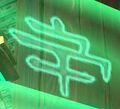
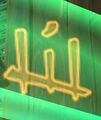
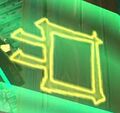



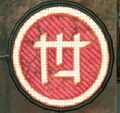

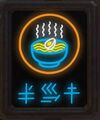



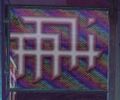

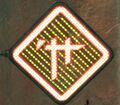


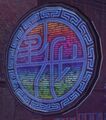

![...in EoD's Launch Trailer[17]](/images/thumb/3/3e/UserThe_Turtle_Academy-CL~screen_launch1.jpg/120px-UserThe_Turtle_Academy-CL~screen_launch1.jpg)
